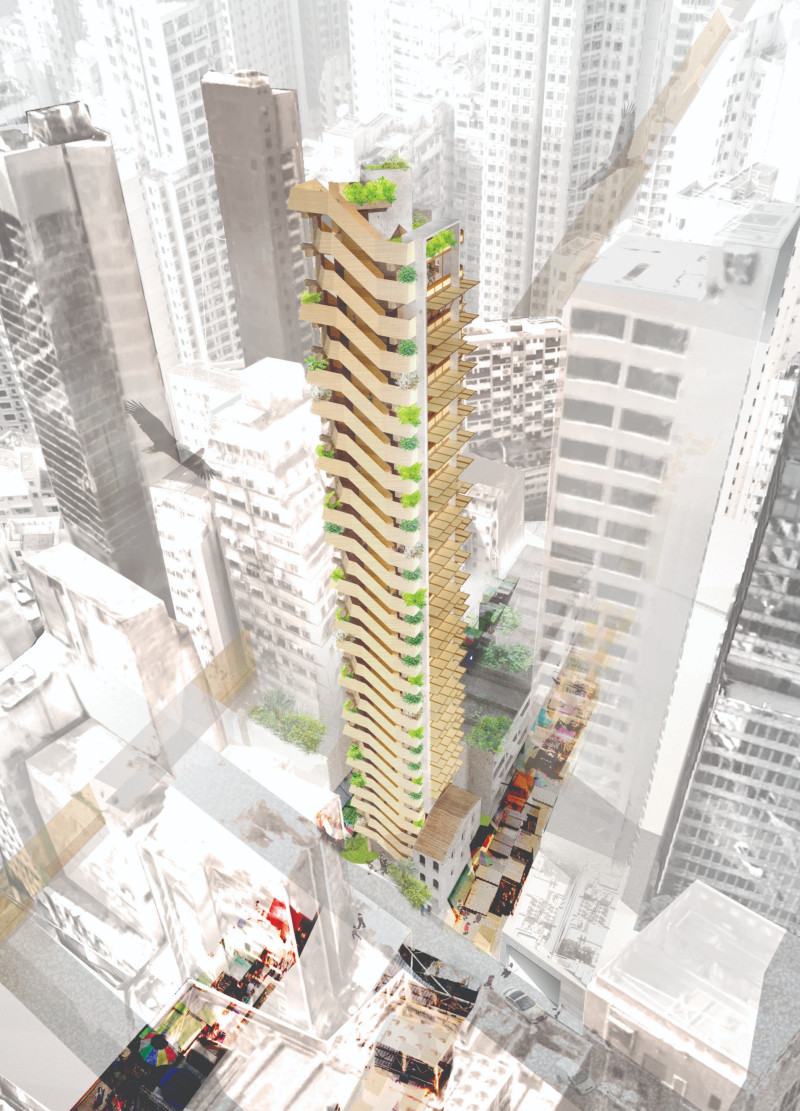5 key facts about this project
The Timeshare Timber Towers project responds to the significant housing challenges present in Hong Kong. Here, many people find it difficult to afford suitable homes amid rising property prices. Located in the bustling urban core, the design includes multifunctional residential towers that aim to support communal living and provide more affordable housing options. This initiative seeks to breathe new life into neglected sites while respecting historical structures, addressing individual housing needs as well as the social context in which they exist.
Architectural Concept
The design centers on activating vacant lots found near historical tenement houses, locally called tonglaus. By placing the towers near workplaces and essential services, the project helps lessen the stress of commuting for residents. This thoughtful positioning not only provides better access to jobs and social networks but also improves the overall quality of urban living for those who call this area home.
Communal Spaces
A key aspect of the design is the inclusion of communal spaces, crafted to encourage community interaction. Shared facilities like daycare services and recreational areas complement private living quarters. The use of operable folding glass louvre doors helps blur the line between private and communal areas. This flexibility allows residents to make choices about their living environment while still enjoying the benefits of shared spaces.
Interior Environment
The interior layout has been designed to counteract the pressure of living in a high-density area. By organizing residential programs across different levels, the design creates distinct zones for both privacy and social interaction. This approach fosters a welcoming and adaptable living space that can cater to the varied lifestyle needs of its residents while promoting a sense of community.
Materiality
Concrete and laminated bamboo products are the primary materials used in the construction of the Timeshare Timber Towers. The choice of materials provides necessary structural support while also reflecting a commitment to sustainability. Bamboo, known for its fast growth, serves as a renewable resource. Using these materials contributes to a lower carbon footprint during the building process, reinforcing the aim of promoting environmentally responsible urban living.
The combined design elements create a layered living experience that balances individual privacy with opportunities for community engagement. Each tower stands as more than just a place to live; it becomes an integral part of a thriving urban environment.


























